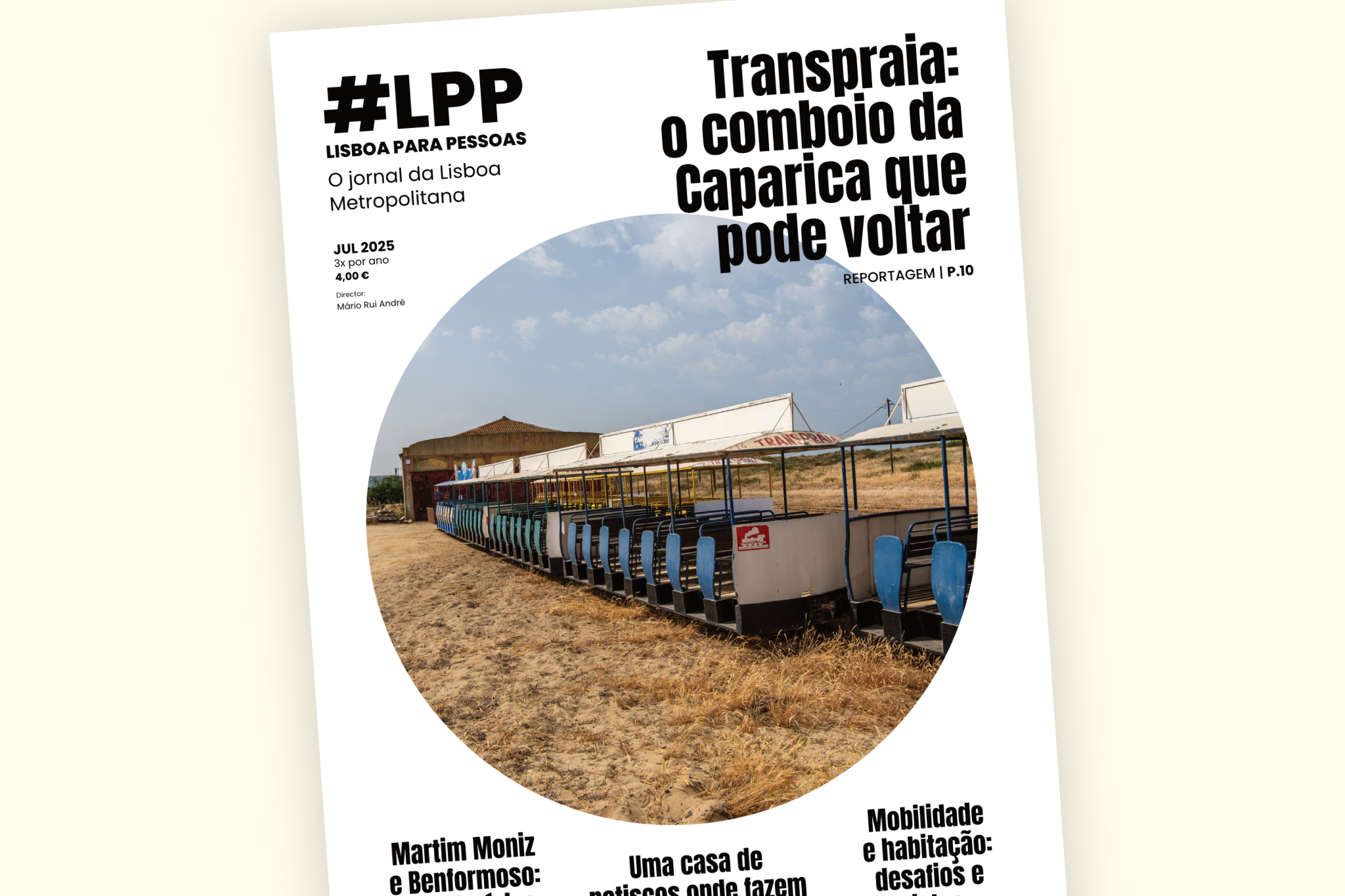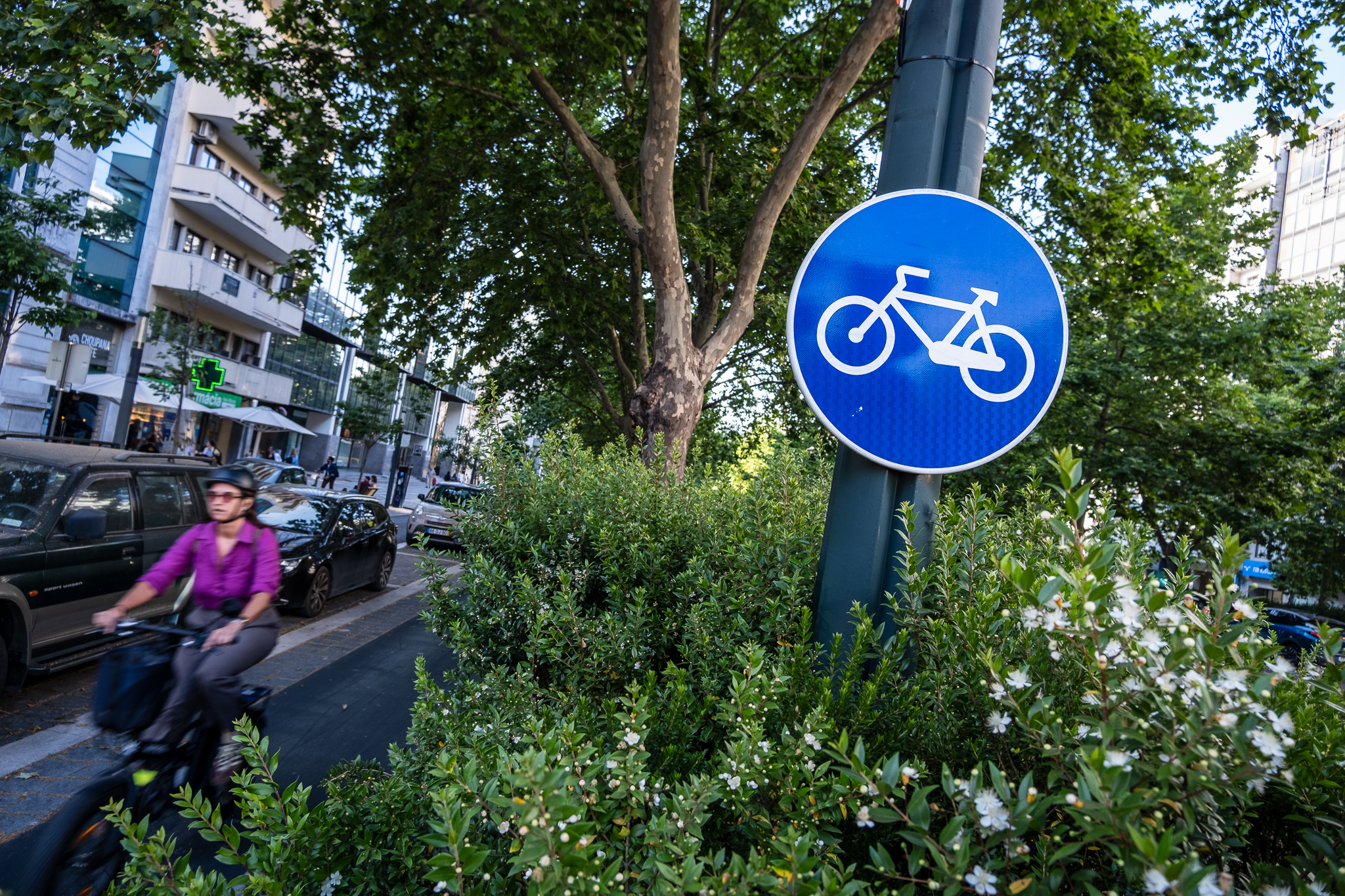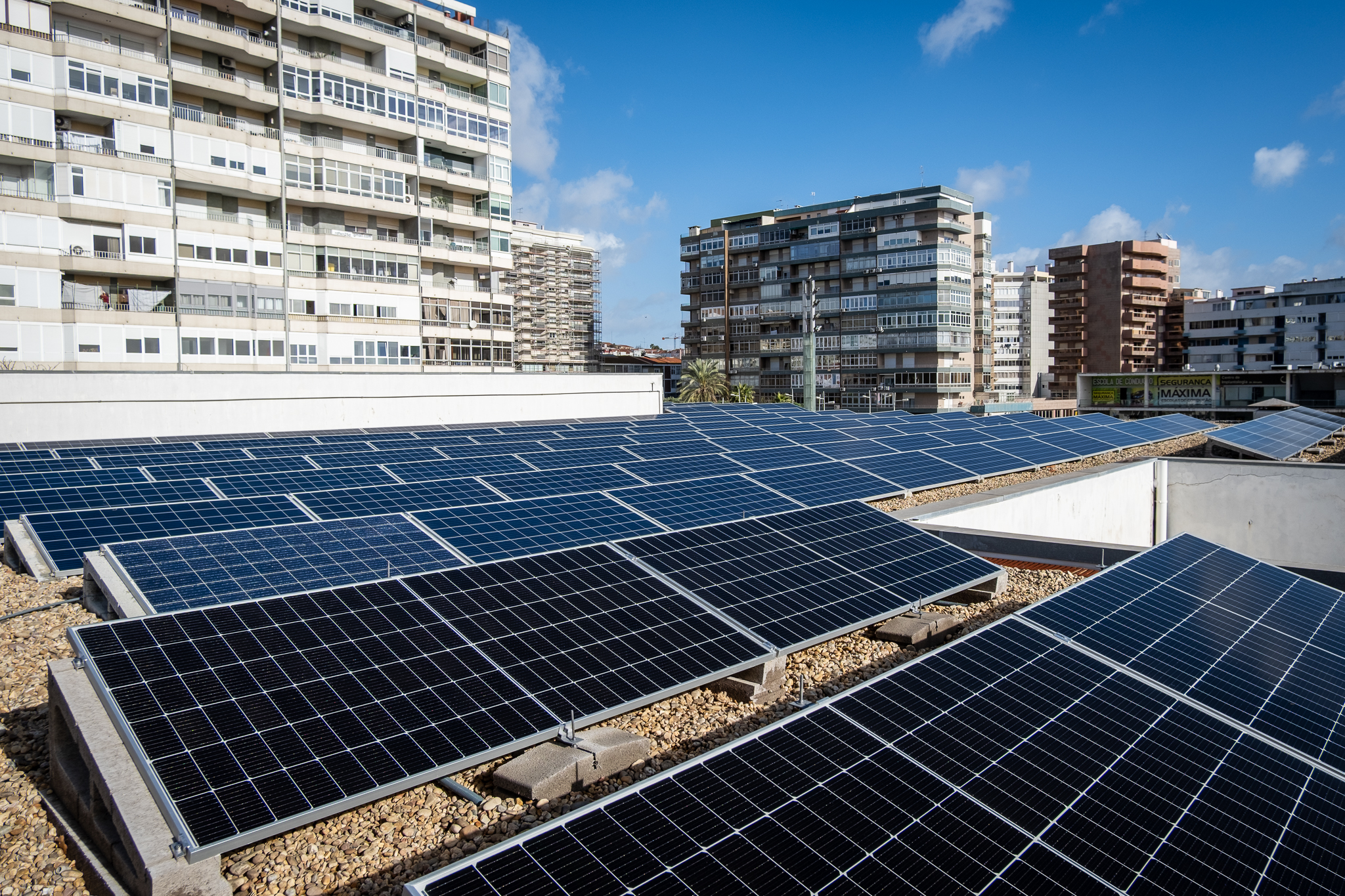Opinion Article.
On the Green Line, one could experiment with interleaving a six-car train between three-car trains - for example, three three-car trains followed by one six-car train.

How to former employee which participated in the commissioning of the extensions to Campo Grande, Cais do Sodré, Gare do Oriente, Telheiras, Amadora, Odivelas, and Santa Apolónia, I follow with great interest and concern the current moment of the Lisbon Metro. I disagree for technical reasons with the current expansion plan - without questioning the competence and professional pride of the colleagues who participate in it, because they have to comply with a plan decided by decree in 2009, in breach of the PROT AML (Regional Plan for Territory Organization of the Lisbon Metropolitan Area) and without extensive public discussion.
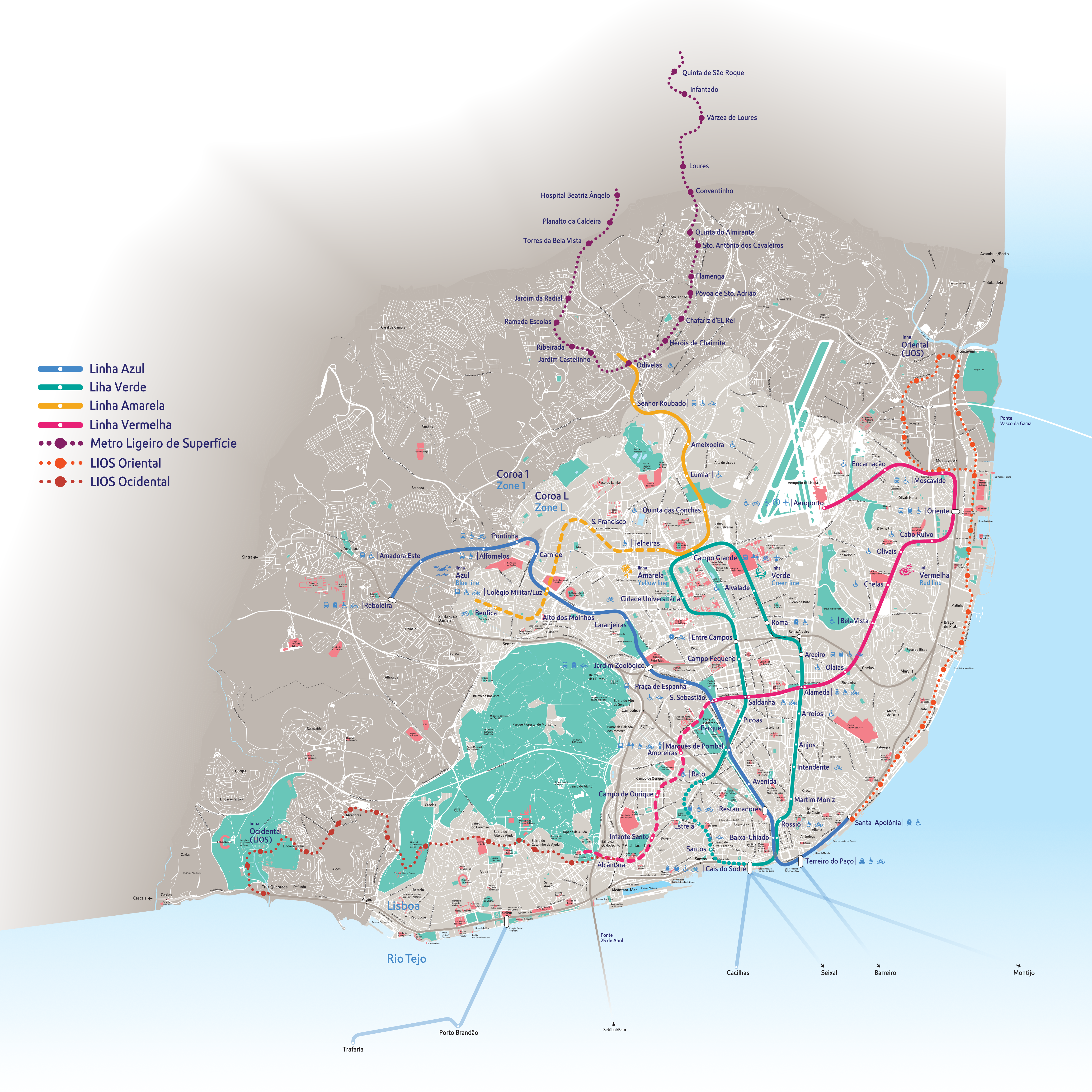
As the disruption of the works is inevitable, it will seem inglorious to be hindering people in their future home-work commute - For example, the intervention near Cais do Sodré station should have been avoided given the nature of the land and the complexity of the work, which makes it more expensive. Instead, people's mobility would have been better guaranteed with the extension of the Red Line, not as is now planned for Alcântara Terrabut to Alcântara Mar - with a viaduct connecting it to the Cascais Line, avoiding the future expensive connection of the Cascais line to the Cintura Line.
But let's get down to the day-to-day life of those who use the Metro today.
1 - The disturbance of the works
By safety reasons - to avoid that, in case of a braking failure, a train stresses the work area -, it is justified that the trains that go to Campo Grande have only three cars. He informed the President of the Metro that before six-car trains ran on the Green Line with intervals of about 4.5 minutes. The capacity offered, considering a capacity of 800 passengers (occupancy of 4 persons/m2) and 60/4.5 = 13 trains per hour and direction, it would be 13×800 = 10 200 passengers/hour and direction (no. of trains/hour = 60 minutes/interval between trains in minutes).

With the constraints of the current works, which should last until June 20 at the latestWith three-car trains with a capacity for 400 passengers, achieving an interval of around three and a half minutes, as promised by the President of the Metro, we will have 60/3,3 = 18 trains/hour e 18×400 = 7,200 passengers/hour.
Not foreseeing shuttle buses between the Alvalade station and Campo Grande, this value would not be bad, as long as the 3.5 minute interval could be maintained (signage allows you to go up to 2.5 minutesbut that would require more staff and rolling stock). However, three-car trains generate long delays at stations because they fill up quickly. So two hypotheses could be tried:
- a three-car train would stop at even stations and the next three-car train would stop at odd stations. This would allow to increase the commercial speed by reducing the travel time and reduce to three minutes the interval between trains and increase the line capacity (interval between trains = round trip length including terminations/(no. of trains on the line x speed) ). For a three minutes interval we would have 20 trains/h and a capacity of 8,000 passengers/h
- Interleaving a six-car train between three-car trains - for example, three three-car trains followed by one six-car train. The three-car trains would continue to Campo Grande, and the six-car train would make the turnaround at Alvalade, on the 2nd track. This would reduce the stopping time at the stations, although the capacity on the Alvalade-Campo Grande section would be lower (6,000 passengers/h for a three minute interval) but higher between Cais do Sodré and Alvalade (10,000 passengers/h for a three minute interval).

2 - still the question of the Loop line
In a meeting with the Lumiar Borough Council in early May, the Minister of the Environment, Duarte Cordeiro, "reassured" the Council that the The choice of the Circle Line over the Loop Line is not yet closedIn a statement issued afterwards, Duarte Cordeiro's office said that the current works are aimed at creating the Circular Line. In a statement issued afterwards, Duarte Cordeiro's office said that the current works aim to create the Circular Line "without calling into question the possibility of other types of operation, such as the operation usually designated by the term 'looped' or the combination of these types of operation"where one "the decision on the operation model, simple or combined, will be defined, in due time, by Metro de Lisboa, supported by the demand and operation studies that will support it".
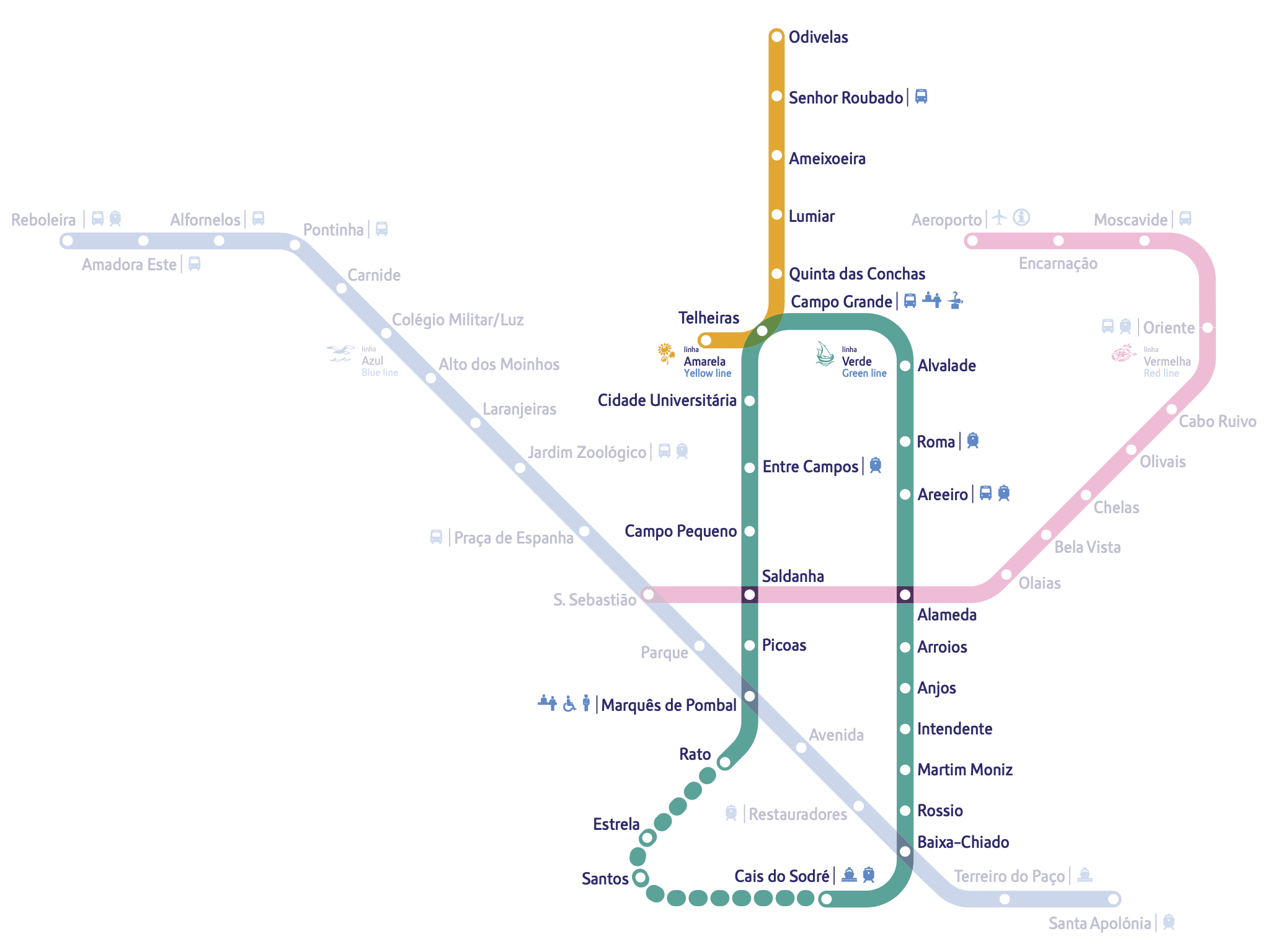
It is surprising. This is a matter to be clarified; the option for a loop or spiral line - as the old London Underground circular line became in 2009 - would dispense with the complex construction work and connection to the pre-existing new viaducts. It is the resumption of the position of former Secretary of State José Mendes, who "guaranteed" that trains coming from the Odivelas line could "enter" the Circular Line.
The information I have - that I repeat, should be clarified - is that eight switches have been installed on the existing viaducts, with all the inconvenience for maintenance and passenger convenience, and will be left in the detour position for the new viaductsThe lances are mechanically fixed by strip fuses (screws) and are outside the control of the signaling system (the eventual inclusion in the system will be at extra cost). If this is the case, the trains will circulate either only on the circular line or only on the Odivelas line, and it will be necessary to go there to remove the fuses and change the position of the drawbars because there is no control by the signaling system. This is not a very orthodox situation, but I repeat, it will have to be confirmed or not.
Correction
The switches and crossings will not be mechanically interlocked. What is awarded as a signaling system is the interlocking to control the eight track switches being installed, for automatic routes only to operate the lircular line (e.g. coming from Cidade Universitária take the diverted route to Campo Grande/Alvalade), with maneuvering routes (reduced speed, requiring human intervention at the control panel to take the route each time) possible to go straight ahead on the direct route (e.g. coming from Cidade Universitária take Campo Grande/Odivelas).
In order to have automatic routes on the loop line, i.e. without the need for operator intervention each time the train approaches, an additional investment will have to be made to change the interlocking, which I estimate at 10 million, but I may be being pessimistic. However, please note that for safety reasons (the route from Cidade Universitária to Campo Grande-Alvalade of the circular line crosses with the Odivelas-Campo Grande-Cidade Universitária route of the loop line) the operation of the circular line should not be mixed with the loop line, that is, with the change of the interlocking, the circular line may be operated in a certain period of time (devices in the diverted position) and then in another period the loop line (devices in the direct position).
3 - the Violet Line
About Violet Line - not from Metro, but from LRT (Light Rail Transit). The decision makers let themselves be influenced by the argument of lower costs, ignoring the popular wisdom that says that cheap gets expensive, and proudly proclaim now the new line that they call light rail that will go from Beatriz Ângelo Hospital in Loures to Infantado passing through Odivelas.
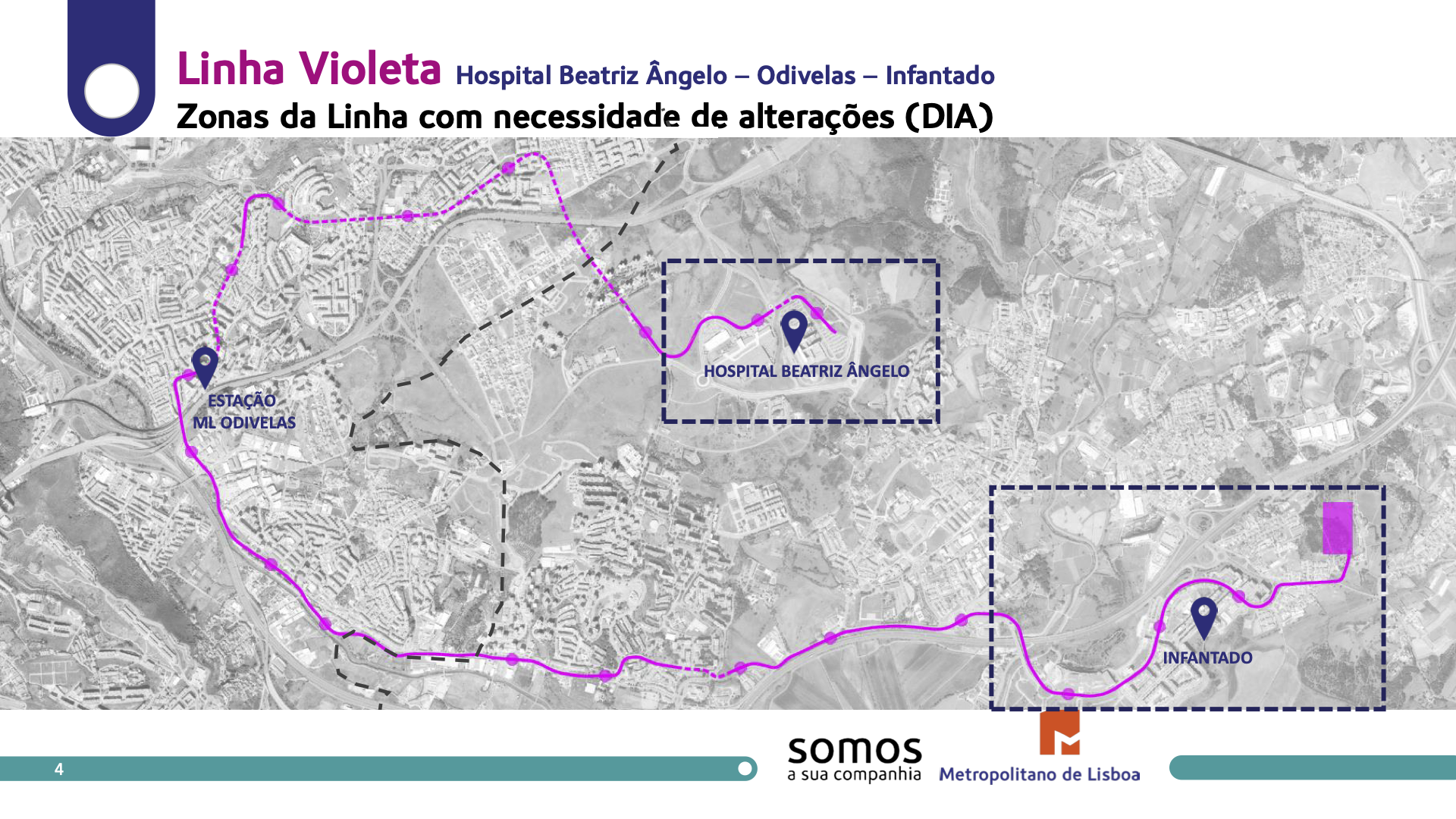
I don't need to repeat the arguments I inserted in the public consultation and which will certainly be ignored, but I note that the main drawback of an LRT or "tramway" is to have a low commercial speed to avoid the consequences of an accident given the permanent conflict with car and pedestrian traffic. We have the experience of the LRT south of the Tagus. We could increase the speed by using viaducts, but they are also expensive. If we disregard the hourly value of passengers (as Thatcher used to say, if you ride public transportation it's because you're a loser) and the accounting of lost hours compared to a real subway, then yes, LRT is cheaper.
But between Odivelas and the Beatriz Ângelo Hospital, over a distance of about 5 km, tunnels are planned over a length of about 3.5 km, which is understandable given the orography of the terrain and the density of construction (are they thinking of resuming the more profitable TBM method?). But then, why not extend the metro from Odivelas to the Hospital, where a deterrent parking lot would be built for those coming from the Mafra, Malveira and A8 area? It would be a much more effective measure to contain the entry of cars into Lisbon than the small circular line proposed (out of curiosity, the implementation of four circular lines in Lisbon fits inside the circular line in Madrid).
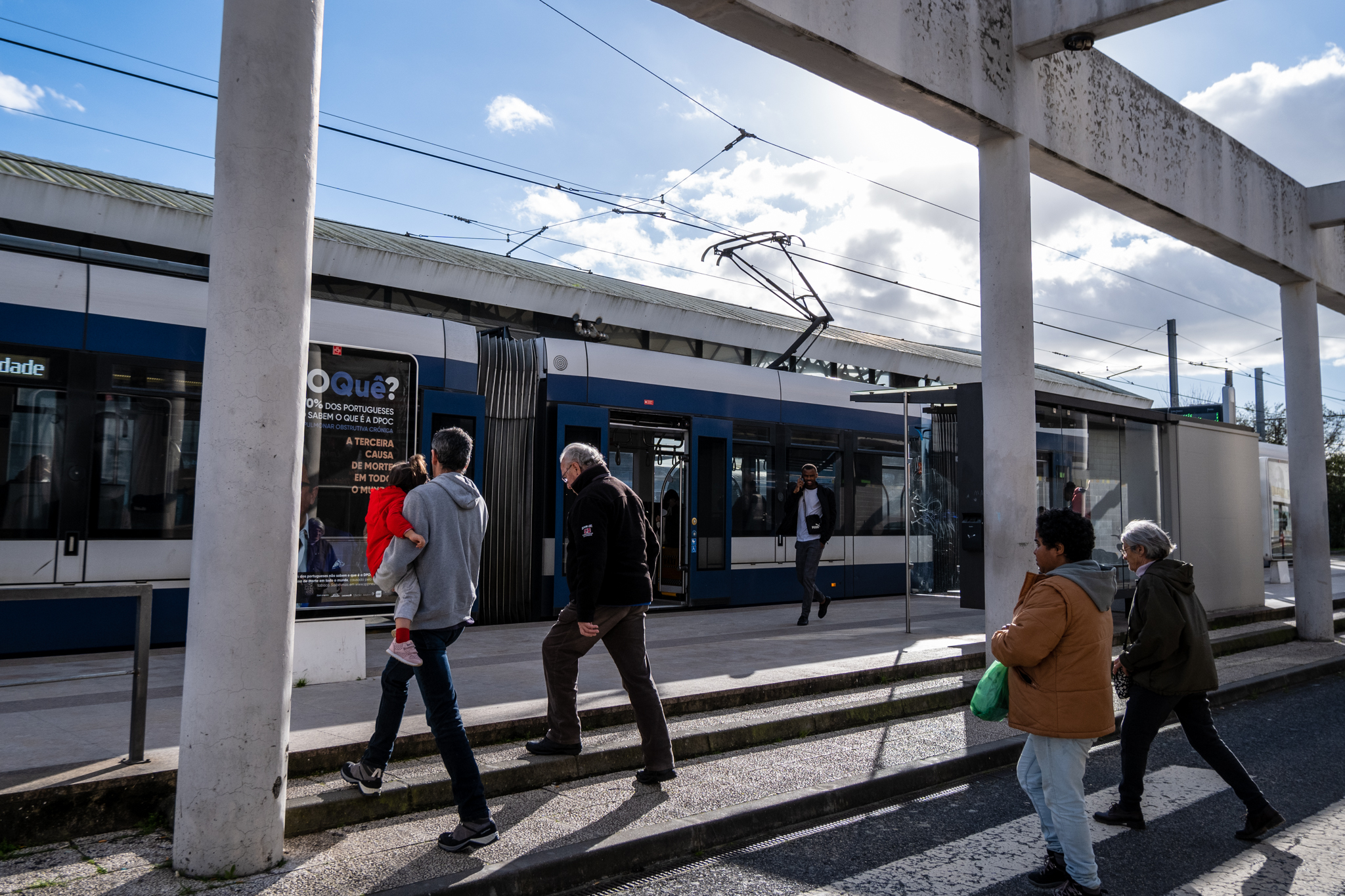
5 - and the extension of the Yellow Line
The amazing turn after the St. Francis of Assisi Square. Also with great pride (and in order to silence the protests of Telheiras residents and to strengthen electoral support for the Benfica Council), has been propagated the proposed extension from Telheiras to Benfica.
It's a shame that the decision makers don't have a modicum of experience in operating or maintaining subway lines, and listen to those who don't. In the Metro there are still technicians who could clarify that sharp curves wear out the material, wheels and rails, increase energy consumption (yes, the Ministry of the Environment is in charge of the Metro), travel time and inconvenience for passengers. The expansion of the Yellow Line is one more line out of a coherent whole in terms of saving time and energy.

In conclusion... It will be a curse that comes from the origin of the Metro, when the "avenida da Liberdade line" turned to Avenida Almirante Reis. Then, the Red Line, to go to the Airport, also turned back. The Violet Line will make a tight U in Odivelas. And the Yellow/Green/Circular Line will turn from Rato to Cais do Sodré, instead of going to the periphery (read: towards Alcântara-Mar, as it was planned) to get people.
That's what Law No. 2/2020 - the 2020 State Budget Law: go to the west, go to Loures. This is not what the Government and Metro did, and the Court of Auditors gave its approval to the first contract of the Circular Line in 2020.
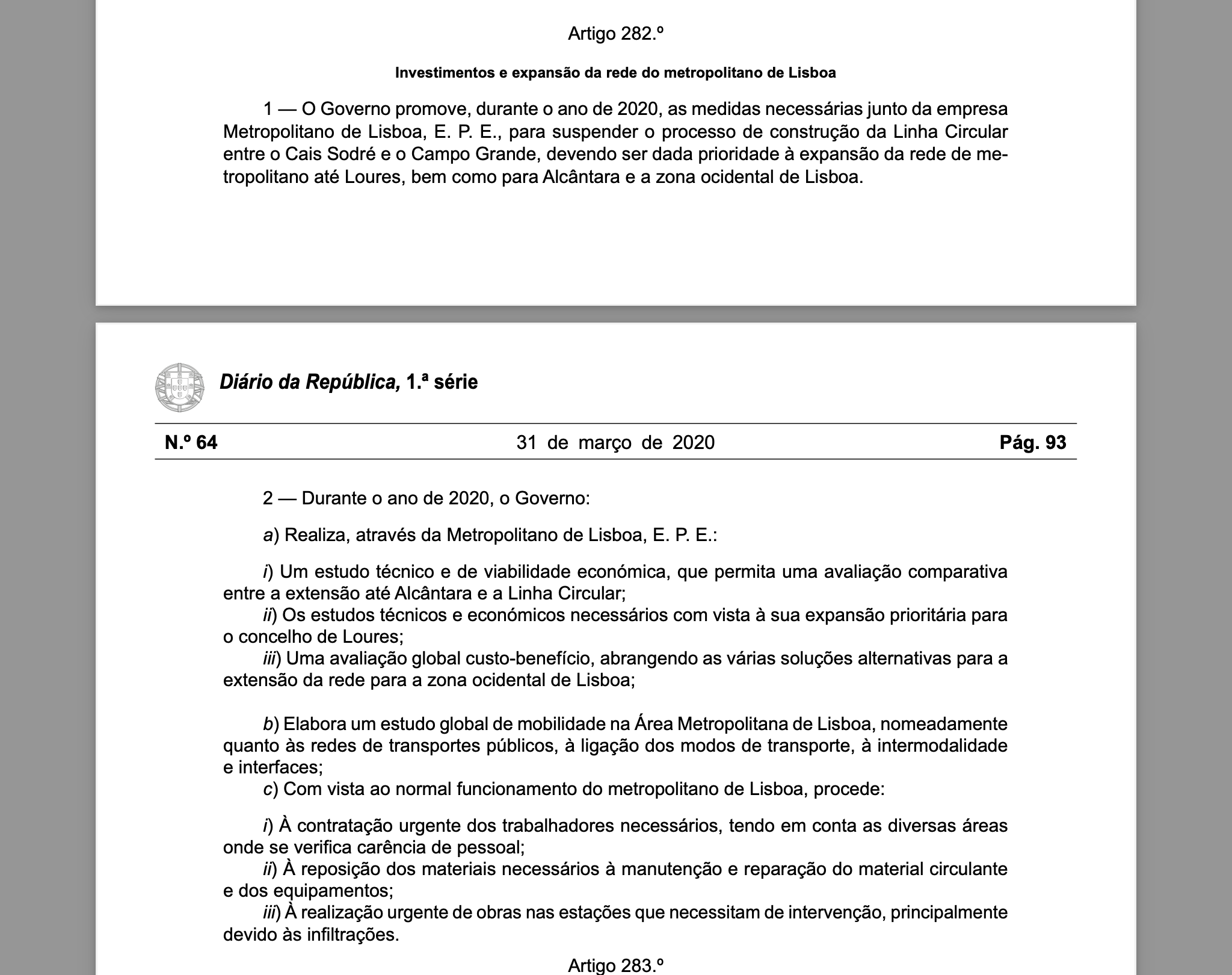
Some said that this Law, more specifically its Article 282, which the Assembly of the Republic had approved was not a law, it was a recommendation; and others said that it was a knight in shining armor over the law that legal practice rejected... Or of how different the regular functioning of institutions is in Portugal... may Júlio Dantas forgive me ("how different love is in Portugal", a phrase taken from The Cardinals' Supper1902, by Júlio Dantas). But let's wait, hope is hard to fade, it may be that the AML PROT will be updatedIn this way, the municipalities come up with PMUS (Sustainable Mobility Plans).


